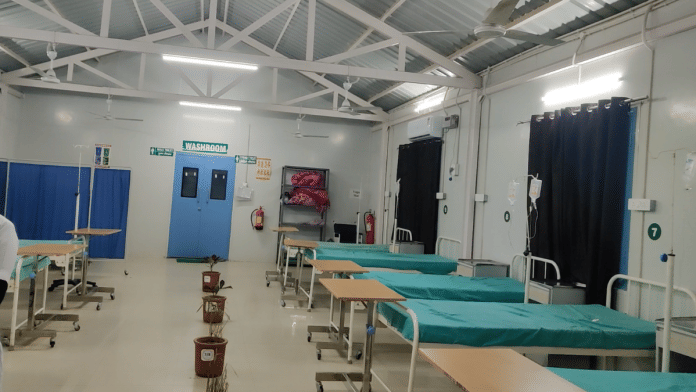Gurugram: The Haryana Assembly was presented with a sobering reality Thursday when Health Minister Arti Singh Rao tabled a detailed statement revealing a sharp increase in the number of youths seeking treatment at drug de-addiction centres across the state.
Responding to a question raised by Indian National Lok Dal (INLD) MLA Arjun Chautala (Rania), the minister disclosed that from April 2024 to 18 March, 2025, a staggering 52,207 youths were registered as outpatients or inpatients at government and private de-addiction centres in Haryana.
This marks a significant rise from 11,395 in 2020-21, highlighting a growing drug crisis gripping the state.
Arjun Chautala comes from Rania assembly segment of Sirsa district, which borders Punjab where the problem of drugs is particularly alarming.
At a rally at Odhan in Sirsa in May 2022, the then chief minister Manohar Lal Khattar had admitted that 40 drug-related deaths had occurred in Sirsa and Fatehabad, another district that shares boundaries with Punjab, till May that year. Seven drug-related deaths were reported in May alone in Sirsa district that year
Amid the rising numbers of youth, aged 18-30, seeking help at rehab centres, there is a silver lining: 14,621 were freed from drug addiction in 2024-25, up from 3,947 in 2020-21.
The minister’s reply showed that Sirsa led with 4,563 recoveries, followed by Hisar (2,680), Panchkula (2,420), and Gurugram (921). Districts like Fatehabad (606) and Rohtak (411) also reported significant recoveries.
Over the past five years, a total of 51,628 youths have overcome addiction, reflecting the impact of government interventions.
However, the pace of recovery struggles to match the influx of new cases as seen in the data presented in the Assembly.
Panchkula topped the list with 13,442 cases, followed by Ambala (8,192), Sirsa (7,020), Gurugram (5,471), and Hisar (4,474). Other districts like Rohtak (1,600), Jind (1,413), and Yamunanagar (2,898) also showed alarming figures. Notably, districts such as Bhiwani and Nuh, which had no registered cases until 2022-23, recorded 835 and 100 cases, signaling the widening reach of substance abuse.
The state, the Health Minister said, operates 30 government-run drug de-addiction centres with a total capacity of 460 beds. These facilities, spread across districts like Sirsa (50 beds), Karnal (20 beds), and smaller centres with 10-15 beds each, are proving inadequate to meet the rising demand.
Additionally, 130 private de-addiction centres and 26 counseling-cum-rehabilitation centres are operational, but the sheer volume of cases underscores the need for expanded infrastructure.
For instance, Sirsa, with 7,020 affected youths this year, has just 80 beds in two facilities, including a district jail centre. Similarly, Panchkula’s 10-bed general hospital is woefully insufficient for its 13,442 cases.
The minister outlined several initiatives initiated by the state government to curb the drug problem.
“Awareness programmes by district mental health teams, in collaboration with schemes like Rashtriya Bal Swasthya Karyakram and AIDS Control Programme, target schools and colleges to educate youth about the perils of drug abuse. Special interventions, including yoga camps, poster-making competitions, and cycle rallies, aim to engage communities in prevention efforts,” the minister was quoted in his reply given in the assembly.
Thirty-eight medical officers underwent a six-month online de-addiction course from PGIMER Chandigarh to bolster treatment capacity. However, only one proposal for financial assistance to NGOs has been received this year from Rewari’s District Child Welfare Council, indicating limited grassroots support.
As for the central initiatives, the National Action Plan for Drug Demand Reduction (NAPDDR) has allocated Rs 2 crore for 2024-25 to establish 15 de-addiction centres in jails, with Rs 1 crore already released.
(Edited by Tony Rai)
Also Read: Beatings, forced labour, starvation—Haryana rehab centres are torture chambers






